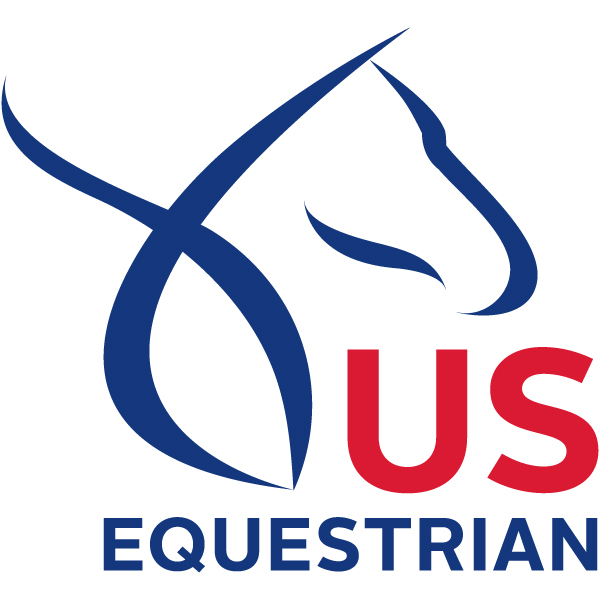Learn how USEF’s General Rule 843 ('Blood Rule') changed in 2025, allowing case-by-case evaluation for minor self-inflicted injuries and clarifying elimination procedures, horse welfare, and competition rules for riders, trainers, and owners.
On the go? Listen to the full article here:

On August 26, 2025, the United States Equestrian Federation (USEF), enacted a major amendment to General Rule 843 (“Blood Rule”). Before the amendment, the Blood Rule required a horse be eliminated from competition if any blood was observed on a horse. This strict policy applied regardless of the blood's source, including minor self-inflicted injuries like the horse biting its tongue or lip. The previous Blood Rule did not allow for discretion or case-by-case evaluation to assess whether the horse needed to be eliminated from competition. Additionally, there was no provision for the horse to continue competing later in the day if the bleeding resolved. This pre-amendment approach aimed to prioritize horse welfare but led to automatic eliminations even in situations where the blood was minor, not causing the horse pain or discomfort, and was not caused by rider or equipment.
The amended Blood Rule recognizes that blood can be due to different causes, not all of which indicate mistreatment or merit elimination. Importantly, the amended Blood Rule now directs judges and ground juries to evaluate each situation on a case-by-case basis and then make the determination of whether elimination is merited.

Key points to the amended Blood Rule include:
- If blood is caused by the rider/handler or equipment, the horse must be eliminated.
- If blood is from a minor, self-inflicted injury (e.g., biting the tongue or cheek), judges may rinse or wipe the area; if bleeding stops, the horse may continue.
- Breed and discipline-specific rules with stricter standards will continue to apply.
Below is a practical summary of frequently asked questions to help riders, trainers, and owners understand the implications of the amended Blood Rule.
Frequently Asked Questions About General Rule 843
- Can decisions regarding elimination for blood be appealed? No .
- If a horse is eliminated for blood, may they compete later in the day or at the same show? Yes. If the bleeding has resolved, the horse may compete later in the day or at the same show.
- Could a minor scab or cut be grounds for elimination? It depends. Judges or the ground jury must evaluate the circumstances. If blood is caused by rider/handler or equipment, elimination is mandatory. The presence of active bleeding is also a factor in determining whether elimination is necessary.
- How will a judge or ground jury determine whether blood was rider or equipment-induced? Officials will use their experience to assess the situation. For example, if blood is in the mouth, officials will examine potential causes such as the horse biting its tongue/cheek. Officials will evaluate bit fit, rider actions, and the horse’s mouth/tongue. For blood elsewhere on the body, officials will consider location, equipment, and rider use of aids.
- Will a pause to examine blood count against a horse for time outs? No.
- If a horse is stopped for blood examination, do they begin their test or course over again? No. They will resume from the point where they were stopped.
- What happens if I’m eliminated in a class that has a work-off or a jump-off? If elimination occurs in the second phase (e.g., jump-off, work-off, championship round), the horse is placed based on their performance in the earlier phase. Example: If four jumpers qualify for a jump-off and one is eliminated for blood in that round, that horse will be placed fourth overall, based on its first-round score.
- My breed or discipline’s rulebook has a stricter rule. Does this change affect me? The Blood Rule applies across disciplines, but stricter breed/discipline rules regarding the presence of blood take precedence. For example, in dressage, any presence of blood results in elimination, regardless of cause, and that stricter standard will continue in dressage competitions.
Legal Assessment & Additional Considerations
From a legal standpoint, the amended Blood Rule raises several important considerations:
- Subjectivity & Disputes: Determining whether blood was caused by equipment, rider actions, a self-inflicted injury, or some other cause may be difficult in certain situations, which could make this rule highly subjective in practice.
- Protests & Appeals: Since decisions regarding elimination for blood are not appealable, competitors should be aware that they have little recourse through the show’s internal processes.
- Contractual Implications: In horse leases, training agreements, and syndicate contracts, the ability (or inability) of a horse to compete at a show may have financial or legal consequences.
Key Dates & Next Steps
Prior to December 1, 2025, owners, exhibitors, and trainers should take the following actions:
- Review the Rulebook: Review both the General Rules and your discipline-specific rules to understand how they interact.
- Inspection Tack & Equipment: Check your tack and equipment to ensure everything is properly fitted, well-maintained, and unlikely to cause skin or mouth injuries.
- Review Contracts & Agreements: Now is the time to look over your current training, showing, and ownership agreements. Consider addressing eliminations for blood under “force majeure” or performance clauses to clarify how competition eliminations would be handled.
The revised Blood Rule provides more flexibility than in years past as application of the rule will be based on a case-by-case basis. Understanding both the rulebook and its potential implications can help avoid disputes and protect all parties involved in USEF competition.
Kimbrell obtained her juris doctorate and bachelor’s degree from the University of Florida and her master’s degree from the University of Tennessee. Kimbrell may be reached at khines@tcb-law.com or 813-834-9191.
*** This article is provided as a guide for educational purposes only. It is not intended to serve as legal advice and should not be used as a substitute for consultation with an attorney.








